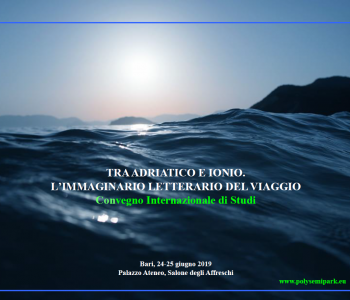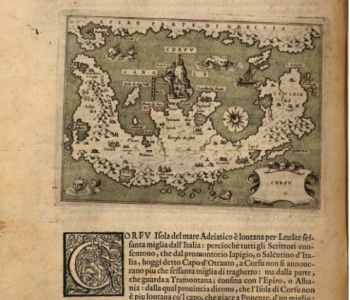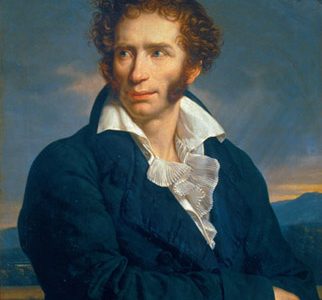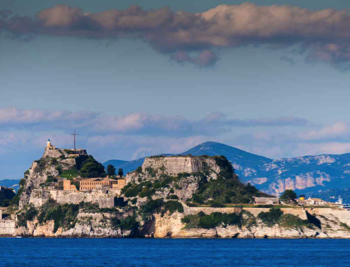 events
events
Between Adriatic and Ionian
The literary imaginary of the journey
International Study Conference
Bari, June, 24-25, 2019
Palazzo Ateneo, Salone degli Affreschi
 events
events
Bari, June, 24-25, 2019
Palazzo Ateneo, Salone degli Affreschi
 Italian-digital-library-item
Italian-digital-library-item
Introduction by R. Nicolì
This digital edition reproduces, within the POLYSEMI Library, the first seventeen letters included in Viaggio in Grecia by Saverio Scrofani, which consists of sixty letters. They have been copied from the text published by Edizioni dell’Ateneo (Rome, 1965) and philologically edited by Claudio Mutini.[1]
The author was born in the province of Ragusa in 1756 and belonged to a simple family that entrusted a maternal uncle, the bishop of Syracuse, with Saverio’s education, hoping he could become a priest. However, disappointing his family expectations, Scrofani lived a quite immoral and troubled life, and devoted to gambling and worldliness. Nevertheless, he has never neglected his studies focused on economy and specific agricultural topics, so as to be extremely prolific in writing the results of his research. He belonged to that generation of intellectuals who, despite being educated within the principles of the Enlightenment, had to disseminate his writings in the changed context of Reforming Absolutism. Read more “Saverio Scrofani” →
 Italian-digital-library-item
Italian-digital-library-item
Introduction by R. Nicolì
This digital edition, within the POLYSEMI Library, reproduces two chapters (the first named Preludio alla Grecia and the last entitled Sul Jonio in volo) of Viaggio in Grecia by Mario Praz, published by Shakespeare and Kafka in 1991.[1]
The author,[2] a man of many intersecting talents, is considered one of the greatest Anglicists and the most eclectic literary critics in the twentieth century. The vastness of his works – the complete bibliography of his writings is made up of over 2,600 entries[3] – is almost unique in Italian literature. Read more “Mario Praz” →
 Italian-digital-library-item
Italian-digital-library-item
Introduction by R. Nicolì
The author of L’isole più famose del mondo descritte da Thomaso Porcacchi da Castiglione arretino was born in Val di Chiana in 1530 and came from a very poor family. He had the opportunity to be educated on humanistic culture thanks to Duke Cosimo I who allowed him to settle in Florence. There he published his first literary works on Virgil: a biography of the author and the translation of The Aeneid Book IV. His life radically changed when he moved to Venice where he met and married the poet Bianca d’Este and came into contact with Gabriele Giolito de’ Ferrari, who published works in vernacular. The author translated Greek and Latin works for the publisher and revised other texts but, in particular, he intervened as a scientific consultant[1]. In Venice he also wrote volumes on various subjects, showing his wide culture that ranges from geography to history and from archaeology to ethnology. Furthermore, Tommaso Porcacchi was responsible for the 16th century editions of Boccaccio’s Laberinto d’amore, Guicciardini’s Storie fiorentine, and Bembo’s Rime. Read more “Tommaso Porcacchi di Castiglione” →
 Italian-digital-library-item
Italian-digital-library-item
Author: Foscolo, Ugo Foscolo
Date of Birth: 6 February 1778, in Zakynthos
Gender: Male
Biography: Foscolo was born in Zakynthos in the Ionian Islands. His father Andrea Foscolo was an impoverished Venetian nobleman, and his mother Diamantina Spathis was Greek. In 1788, upon the death of his father, who worked as a physician in Spalato, today Croatia (Split), the family moved to Venice, and Foscolo completed the studies he began at the Dalmatian grammar school at the University of Padua. Amongst his Paduan teachers was the Abbé Melchiore Cesarotti, whose version of Ossian was very popular in Italy, and who influenced Foscolo’s literary tastes; he knew both modern and Ancient Greek. His literary ambition revealed itself in the appearance in 1797 of his tragedy Tieste—a production that enjoyed a certain degree of success. Read more “Ugo Foscolo” →
 Italian-digital-library-item
Italian-digital-library-item
Introduction by R. Nicolì
This digital edition for the POLYSEMI Library reproduces some sections of Francesco Cusani’s text, La Dalmazia Le Isole Jonie e la Grecia (visitate nel 1840), published in two volumes in Milan by Tipografia Pirotta in 1847. The selected parts, copied from the period original text[1], are related to the project area of the Ionian Islands, the subject of the first seven chapters of the second volume. Read more “Francesco Cusani” →